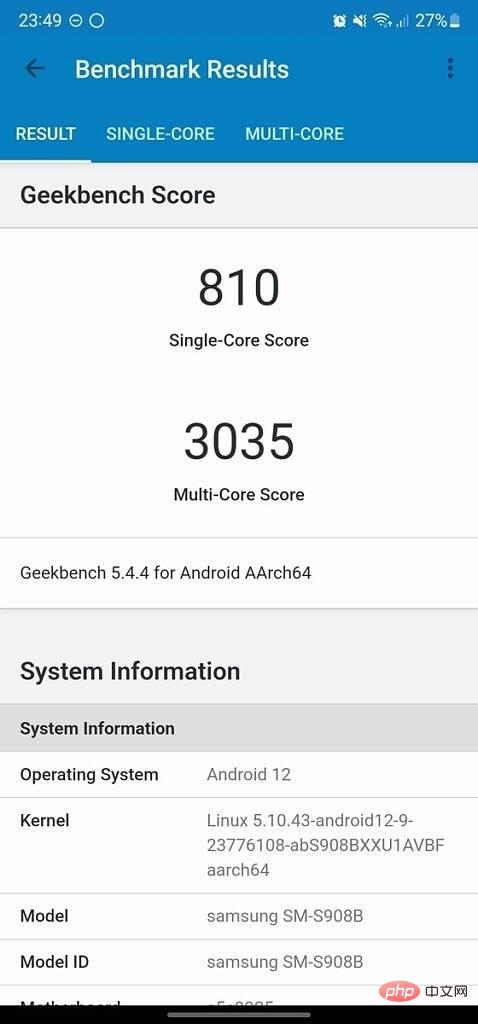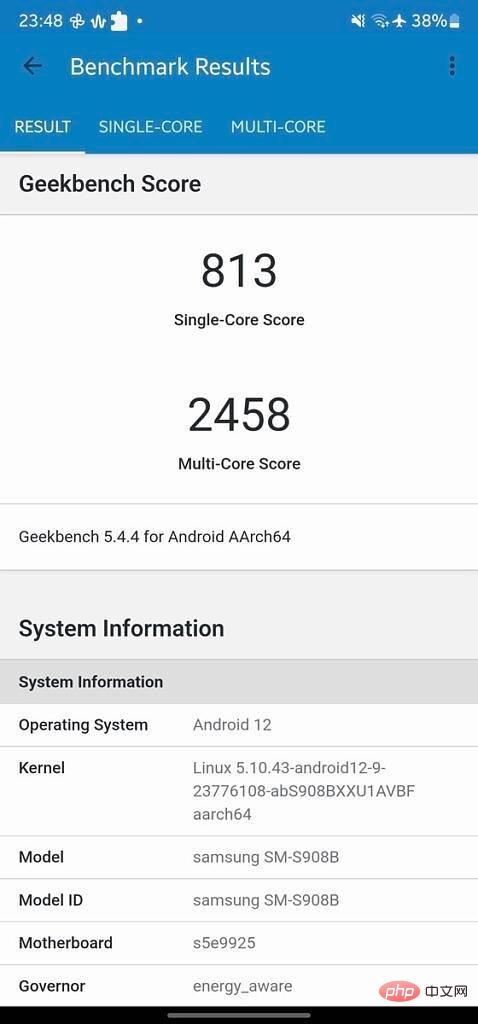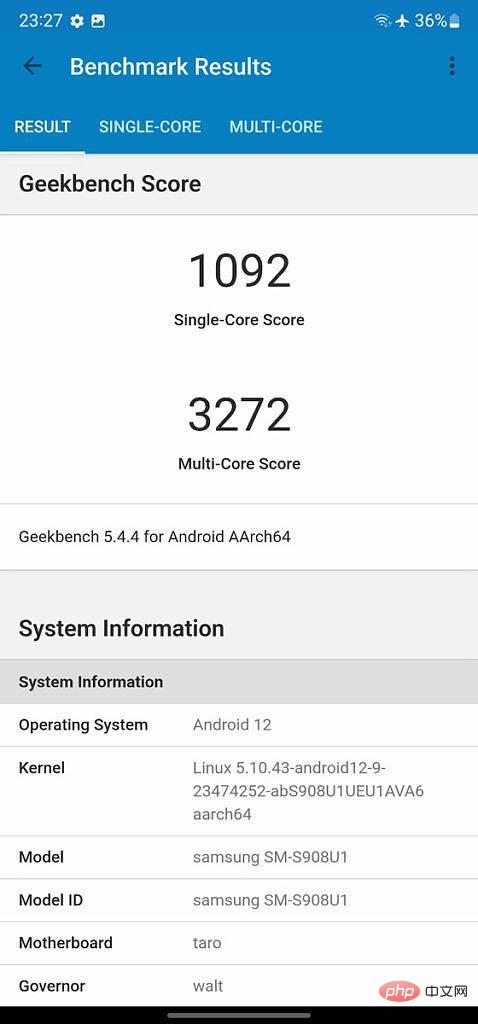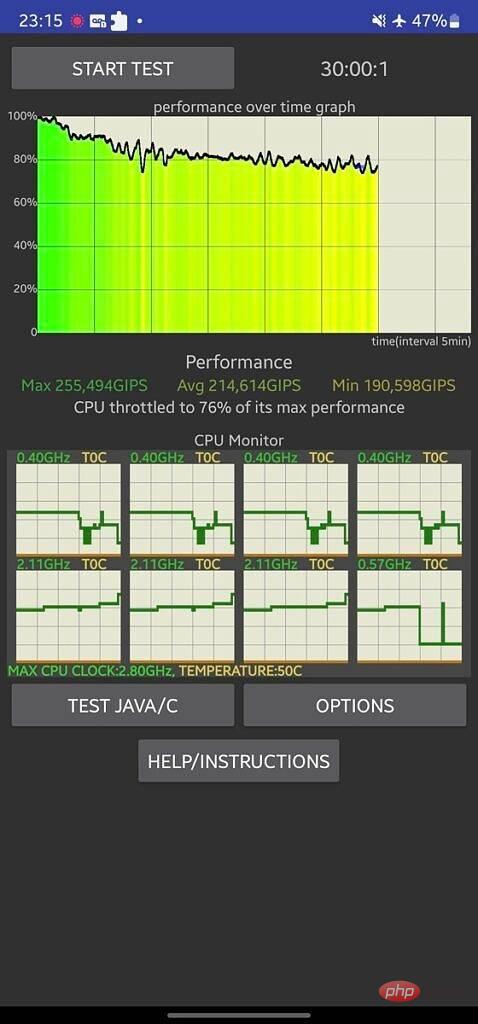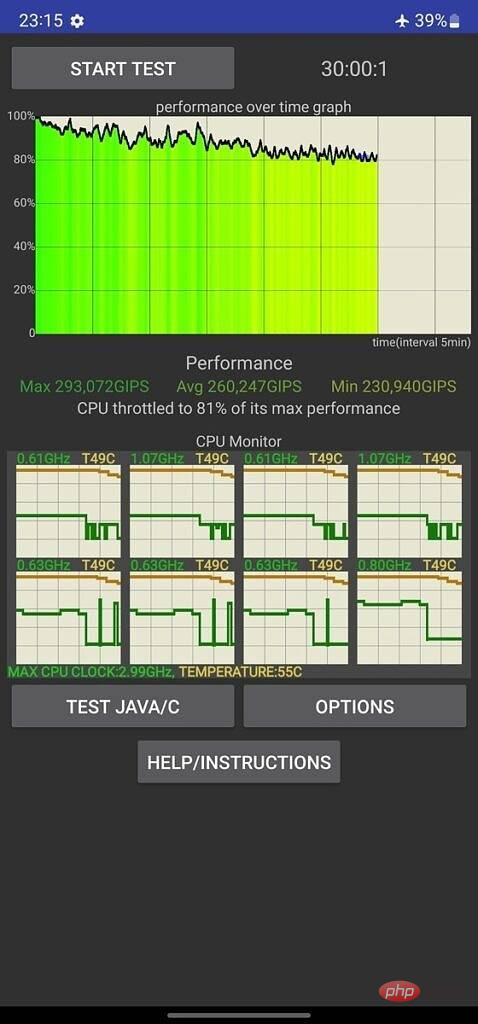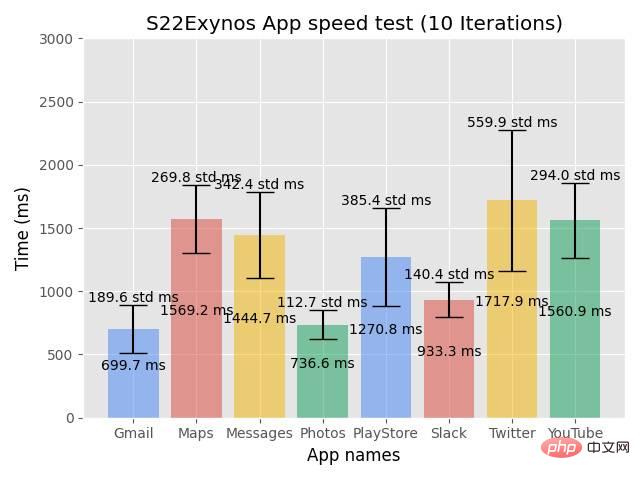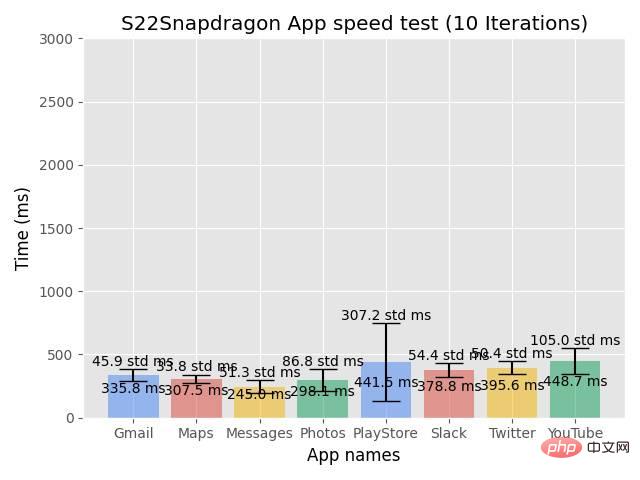Snapdragon Samsung Galaxy S22 Ultra is much better than Exynos
Samsung updates its flagship smartphone lineup every year, and every year there's a controversial question: Which is better, Snapdragon or Exynos? Exynos is the company's in-house chipset that powers some of its phones every year, although Europe is almost always the one region guaranteed to get Exynos chips. The US tends to get Snapdragon chips, and then in all other regions it's a toss-up as to what chipset they'll get. This year, India got its first Snapdragon chip in the Samsung Galaxy S22 series, and like clockwork, Europe got its Exynos.
As we noted, there appear to be some major issues with retail units of the Samsung Galaxy S22 Ultra. Display flickering issues and performance issues have been fixed. Since publishing our article, I've had a number of consumers contact me on Twitter saying they're experiencing similar performance issues on their Exynos-based S22 devices. I've even seen some users say things have gotten worse since the last update. Keep in mind that Samsung is aware of the performance issues currently facing Exynos devices, at least according to noted leaker Max Jambor.
To be fair, I've also had a lot of consumers tell me that there are no issues with their devices. The purpose of this article is not to say that every user will have this experience, but there are quite a few consumers complaining about the performance of their devices. I have now managed to get my hands on a Galaxy S22 Ultra device powered by Qualcomm Snapdragon 8 Gen 1, provided by Samsung PR USA, and tested it against a retail Exynos-based device purchased directly from Samsung Ireland. The results may be what you expect. Samsung Galaxy S22 Ultra: Snapdragon vs. Exynos
For context, I was originally going to set these two devices up as new to compare against each other, but I feel like any testing I did Does not account for the actual device currently being used. Benchmarks can be idealistic on an empty device with nothing installed, people buy phones to use them outside of benchmarks, right?
Instead, developer options were used to prevent any background processes from running on the device, and "Do not preserve activities" was enabled on both devices. Where possible, these devices were also disconnected from the Internet so that they could not receive push notifications that could interfere with testing. Essentially, I make sure there are no background processes running, and I also make sure there are no network interferences.
Both devices have also been updated to the latest available software versions, with build numbers and build dates below.
- Exynos version:
- S908BXXU1AVBF / S908BOXm1AVBF (Build date: February 23) Snapdragon version:
- S908U1UEU1AVA6 / S908U1OYM1AVA6 ( Build Date: January 8) Benchmarks
First, I benchmarked both devices side by side to test the differences. I ran the Geekbench 5 test on the two Galaxy S22 Ultras I own, and asked TechnikNews' Nils Ahrensmeier to run it on his Exynos device.
- ##SnapdragonThese results already show a huge performance difference between the Exynos and Snapdragon variants of the Galaxy S22 Ultra, even across two runs of the same unit. However, benchmarks aren't everything, and it's entirely possible for a phone to perform well while also failing to hit certain key metrics in a benchmark to score high. Throttling and Sustained Performance
Sustained performance is one of the most important metrics to pay attention to when using a smartphone. If sustained performance is poor, then after a short period of time your performance will degrade significantly. I did a comparison test between the two devices, and while performance was consistent between the two, the Snapdragon chipset always came out ahead. Still, this shows more reasonable results for the Exynos and doesn't itself indicate a problem.
- Exynos
-
##Snapdragon
To be clear, some of this is caused by other factors on the phone, such as the screen. However, there are significant differences in energy use.
In my testing, I also found high idle consumption, which means users will experience lower standby time on Exynos devices than on Snapdragon. App Launch TestWe designed a real-world test of app launch speed that launches some of the popular apps we use every day for 10 consecutive iterations. These applications are launched "cold" on the device, meaning the application is not cached in memory before being launched. When the app's main activity first starts drawing, the timing stops, so there's no need to wait for content to load from the network. Therefore, this test can determine how quickly a device can load applications from storage to memory, but it is important to note that this test is sensitive to changes in application and operating system versions. Given that we're comparing two variants of the same phone, it's easier to draw direct conclusions.-
Exynos Samsung Galaxy S22 Ultra performs poorly in general use
Above, I have included a video to show some of the issues I noticed that are not present on the Snapdragon variant Exynos variant. As evidence of the real-world consequences of some of these issues, I was logged into all the same apps on both devices. I use both devices differently than usual, all the same apps I'm logged into on the Exynos device are the same apps I'm logged into on the OPPO Find N, OnePlus 9 Pro, and Google Pixel 6 Pro, just to name a few example.
All these performance issues, from delayed login to UI stuttering and delayed S Pen integration, add up to a poor experience. The phone is slow, it actively gets in the way of my work, and software updates have not improved the situation. Taking a screenshot and cropping it takes a few seconds, whereas on a Snapdragon device it's a near-instant process. The Exynos 2200 experience is almost identical to that of using a budget device, with everything taking a second longer than expected on a top-end flagship.
The Exynos 2200 experience is almost identical to that of using a budget device, everything takes a second longer than expected with a top flagship product
In other aspects of these devices, I didn't really notice any differences. The cameras are very close - if not quite - to each other (although I think the Qualcomm has a slight edge from my own use), and the stability seems to be about the same for anything less extreme. Walking around Barcelona and shooting equally well on both devices, I didn't notice any issues in this regard.As I already mentioned Well, I've had several users contact me about their poor experiences with the Exynos 2200 variant of the device. Not a single user with a Snapdragon chipset has contacted me complaining about the same issue. I'm not sure if every Exynos user encounters these issues, but there are certainly a significant number. I even tried enabling high performance mode in my battery settings but it made no difference. I also didn't see any signs of memory management issues as there was always RAM available.
Exynos is important to the Android ecosystem, but this experience is unacceptable
It pains me to say it when it comes to Android smartphones, but Exynos is important. Qualcomm has a virtual monopoly on the Android flagship market... although there's no denying that MediaTek is catching up quickly. Having Samsung, the largest Android OEM in the space, use its own chipsets for a large portion of its portfolio puts some pressure on Qualcomm, which in an ideal world would be the same number of users who want Exynos chipsets as they are hungry for Qualcomm chips. Group.
It's hard to say what the cause of these problems is. It's likely to be the Exynos 2200, as other Exynos in the past haven't quite been on par with Snapdragon either. Or it could be that Samsung has coincidentally messed up the software on the Exynos variants. Samsung doesn't appear to have made any public statements about Exynos variants, as ComputerBase even said that while the company was contacted, it declined to say whether an update would be released.
In the past, as with the Exynos Galaxy S21 Ultra, gaming performance has been poor throughout the product's lifespan, as the Exynos 2100 just couldn't run properly, and no amount of software updates could bring it on par with its Snapdragon counterparts. As a result, the Galaxy S21 Ultra falls short of an across-the-board recommendation for its stellar performance, as your ability to play games on the device largely depends on where you buy it from. This is quite unacceptable considering the launch price of the phone remains at Rs 1,06,000/€1,249.
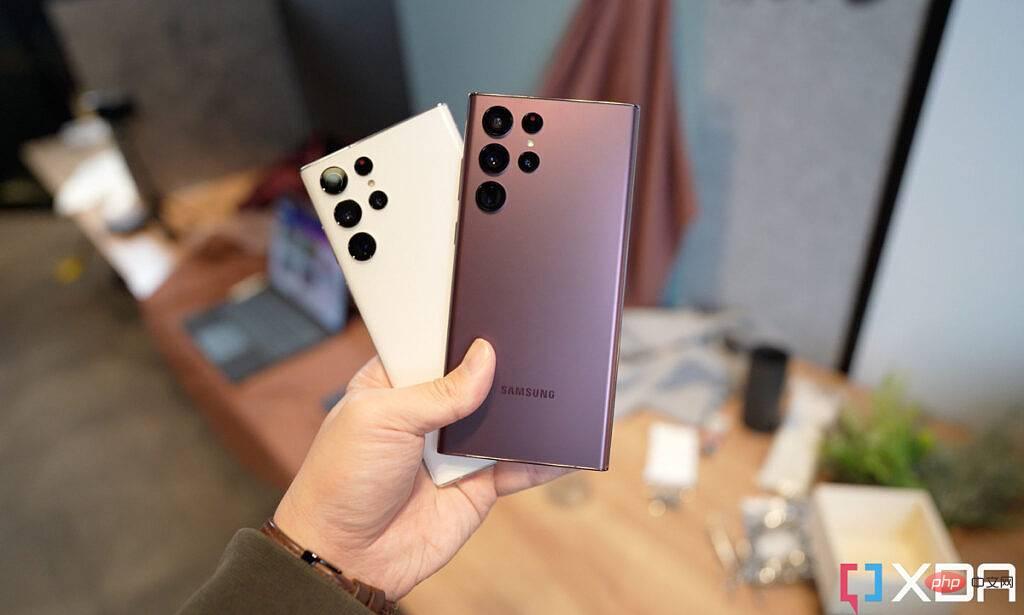
As it stands, the Exynos 2200 Galaxy S22 Ultra is completely useless as a daily driver
For now, the only thing I can say is if you live in Europe, don't buy the Samsung Galaxy S22 Ultra. As it stands, the Exynos 2200 Galaxy S22 Ultra is completely useless as a daily driver. It's incredibly laggy and the battery life is terrible. It didn't improve anything and I had to turn off my phone multiple times during the day. I find it difficult to recommend a product that costs so much but performs so poorly, and I would be doing a disservice as a reviewer if I didn't highlight these issues I face at retail. As long as other OEMs are offering top-tier flagships that consistently perform like the top-tier flagships in your region, there's little reason to buy the Exynos Galaxy S22 series and take the draw on whether you're going to get a device that performs like the top-tier flagships. Some Exynos users get a good device, some don't - and that's unacceptable.
The above is the detailed content of Snapdragon Samsung Galaxy S22 Ultra is much better than Exynos. For more information, please follow other related articles on the PHP Chinese website!

Hot AI Tools

Undresser.AI Undress
AI-powered app for creating realistic nude photos

AI Clothes Remover
Online AI tool for removing clothes from photos.

Undress AI Tool
Undress images for free

Clothoff.io
AI clothes remover

Video Face Swap
Swap faces in any video effortlessly with our completely free AI face swap tool!

Hot Article

Hot Tools

Notepad++7.3.1
Easy-to-use and free code editor

SublimeText3 Chinese version
Chinese version, very easy to use

Zend Studio 13.0.1
Powerful PHP integrated development environment

Dreamweaver CS6
Visual web development tools

SublimeText3 Mac version
God-level code editing software (SublimeText3)

Hot Topics
 1386
1386
 52
52
 New report delivers damning assessment of rumoured Samsung Galaxy S25, Galaxy S25 Plus and Galaxy S25 Ultra camera upgrades
Sep 12, 2024 pm 12:23 PM
New report delivers damning assessment of rumoured Samsung Galaxy S25, Galaxy S25 Plus and Galaxy S25 Ultra camera upgrades
Sep 12, 2024 pm 12:23 PM
In recent days, Ice Universe has been steadily revealing details about the Galaxy S25 Ultra, which is widely believed to be Samsung's next flagship smartphone. Among other things, the leaker claimed that Samsung only plans to bring one camera upgrade
 Samsung Galaxy S25 Ultra mobile phone leaked: 6.86 inches, horizontal screen-to-body ratio 94.1%
Aug 17, 2024 pm 01:49 PM
Samsung Galaxy S25 Ultra mobile phone leaked: 6.86 inches, horizontal screen-to-body ratio 94.1%
Aug 17, 2024 pm 01:49 PM
According to news on August 17, the source @ibinguniverse posted on Weibo today, stating that the exact size of Apple iPhone 16 Pro Max is 6.88 inches, and the exact size of Galaxy S25 Ultra is 6.86 inches. Both can be regarded as 6.9 inches. Sources indicate that the Samsung Galaxy S25 Ultra has a narrower body and a wider screen than the S24 Ultra, with a horizontal screen-to-body ratio of 94.1%, while the S24 Ultra’s horizontal screen-to-body ratio is 91.5%. Fenye checked the relevant Weibo of the source. He also commented on the newly exposed photos of iPhone 16 Pro Max and believed that it was wrong to be close to a micro-curve. The phone is actually a straight screen + 2.5D glass.
 Samsung's 10,000-yuan foldable phone W25 revealed: 5-megapixel under-screen front camera and thinner body
Aug 23, 2024 pm 12:43 PM
Samsung's 10,000-yuan foldable phone W25 revealed: 5-megapixel under-screen front camera and thinner body
Aug 23, 2024 pm 12:43 PM
According to news on August 23, Samsung is about to launch a new folding mobile phone W25, which is expected to be unveiled at the end of September. It will make corresponding improvements in the under-screen front camera and body thickness. According to reports, Samsung W25, codenamed Q6A, will be equipped with a 5-megapixel under-screen camera, which is an improvement over the 4-megapixel camera of the Galaxy Z Fold series. In addition, the W25’s external-screen front camera and ultra-wide-angle camera are expected to be 10 million and 12 million pixels respectively. In terms of design, the W25 is about 10 mm thick in the folded state, which is about 2 mm thinner than the standard Galaxy Z Fold 6. In terms of screen, the W25 has an external screen of 6.5 inches and an internal screen of 8 inches, while the Galaxy Z Fold6 has an external screen of 6.3 inches and an internal screen of 8 inches.
 Samsung is revealed to start installing its first ASML High-NA EUV lithography machine by the end of 2024 at the earliest
Aug 16, 2024 am 11:11 AM
Samsung is revealed to start installing its first ASML High-NA EUV lithography machine by the end of 2024 at the earliest
Aug 16, 2024 am 11:11 AM
According to news from this site on August 16, the Seoul Economic Daily reported yesterday (August 15) that Samsung will install its first High-NAEUV lithography machine from ASML between the fourth quarter of 2024 and the first quarter of 2025. It is expected to be put into use in mid-2025. Reports indicate that Samsung will install the first ASMLTwinscanEXE:5000High-NA lithography machine in its Hwaseong campus, which will be mainly used for research and development purposes to develop next-generation manufacturing technologies for logic and DRAM. Samsung plans to develop a strong ecosystem around High-NAEUV technology: In addition to acquiring high-NAEUV lithography equipment, Samsung is also cooperating with Japan's Lasertec to develop high-NAEUV lithography equipment specifically for High-NAEUV lithography equipment.
 Xiaomi 15 series full codenames revealed: Dada, Haotian, Xuanyuan
Aug 22, 2024 pm 06:47 PM
Xiaomi 15 series full codenames revealed: Dada, Haotian, Xuanyuan
Aug 22, 2024 pm 06:47 PM
The Xiaomi Mi 15 series is expected to be officially released in October, and its full series codenames have been exposed in the foreign media MiCode code base. Among them, the flagship Xiaomi Mi 15 Ultra is codenamed "Xuanyuan" (meaning "Xuanyuan"). This name comes from the Yellow Emperor in Chinese mythology, which symbolizes nobility. Xiaomi 15 is codenamed "Dada", while Xiaomi 15Pro is named "Haotian" (meaning "Haotian"). The internal code name of Xiaomi Mi 15S Pro is "dijun", which alludes to Emperor Jun, the creator god of "The Classic of Mountains and Seas". Xiaomi 15Ultra series covers
 The first 1.5K under-screen camera! Nubia Z70 Ultra is here: the world's first Snapdragon 8 Gen4 true full-screen phone
Aug 19, 2024 pm 03:47 PM
The first 1.5K under-screen camera! Nubia Z70 Ultra is here: the world's first Snapdragon 8 Gen4 true full-screen phone
Aug 19, 2024 pm 03:47 PM
According to news on August 19, Nubia has been adhering to the true full-screen design since the release of Z50 Ultra, and has been continuously exploring the field of proactive photography under high-pixel screens. Today, digital blogger Wisdom Pikachu broke the news that the Nubia Z70 Ultra, which will be released in the second half of this year, will debut with 1.5K under-screen camera technology, which is the highest-resolution UDC solution in the industry so far. It is reported that ZTE’s under-screen proactive solution has advanced to the sixth generation. The latest under-screen proactive solution is available in the Nubia Z60 Ultra and Red Magic 9S Pro series. The screen resolution is 2480x1116, which is between 1080P and 1.5K resolution. This time Nubia will break through the limitations of existing resolutions and set a new benchmark in the industry.
 New report delivers damning assessment of rumoured Samsung Galaxy S25, Galaxy S25 Plus and Galaxy S25 Ultra camera upgrades
Sep 12, 2024 pm 12:22 PM
New report delivers damning assessment of rumoured Samsung Galaxy S25, Galaxy S25 Plus and Galaxy S25 Ultra camera upgrades
Sep 12, 2024 pm 12:22 PM
In recent days, Ice Universe has been steadily revealing details about the Galaxy S25 Ultra, which is widely believed to be Samsung's next flagship smartphone. Among other things, the leaker claimed that Samsung only plans to bring one camera upgrade
 Long awaited! Xiaomi MIX Flip upgrade adds Mijia App external screen display function
Aug 20, 2024 pm 09:39 PM
Long awaited! Xiaomi MIX Flip upgrade adds Mijia App external screen display function
Aug 20, 2024 pm 09:39 PM
According to news on August 20, today, Xiaomi ThePaper OS officially announced an important update. Mijia App now supports external screen display on Xiaomi MIX Flip. To enable this feature, users only need to upgrade Mijia App to version V9.7.701 and above, and then add Mijia App in phone settings-external screen-external screen application. After opening the app, users can view supported devices in "My Home" directly on the external screen and quickly adjust the device status. In addition to the Mijia App, fenye's English learning software app also supports the external screen display of Xiaomi MIX Flip and can be directly switched to the internal screen for use. Xiaomi MIXFlip release date: July 19 Processor: Snapdragon 8Gen3 internal screen



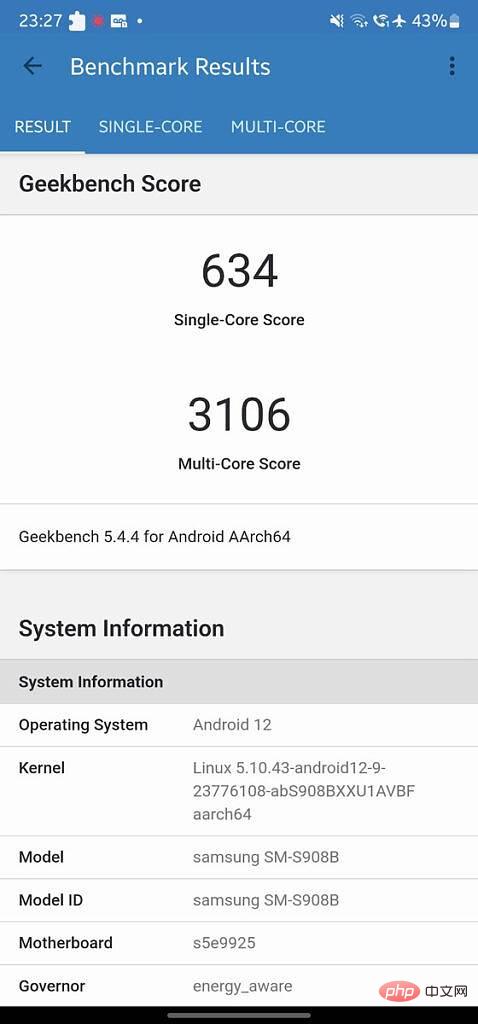 Exynos
Exynos